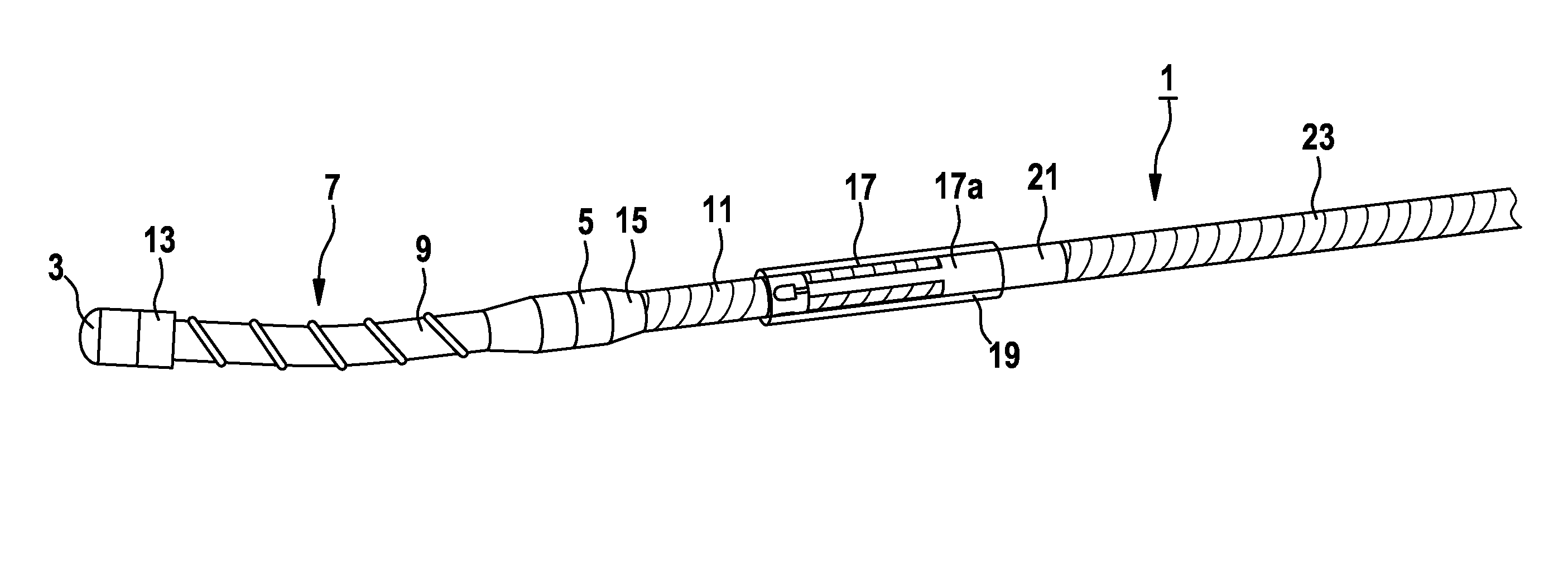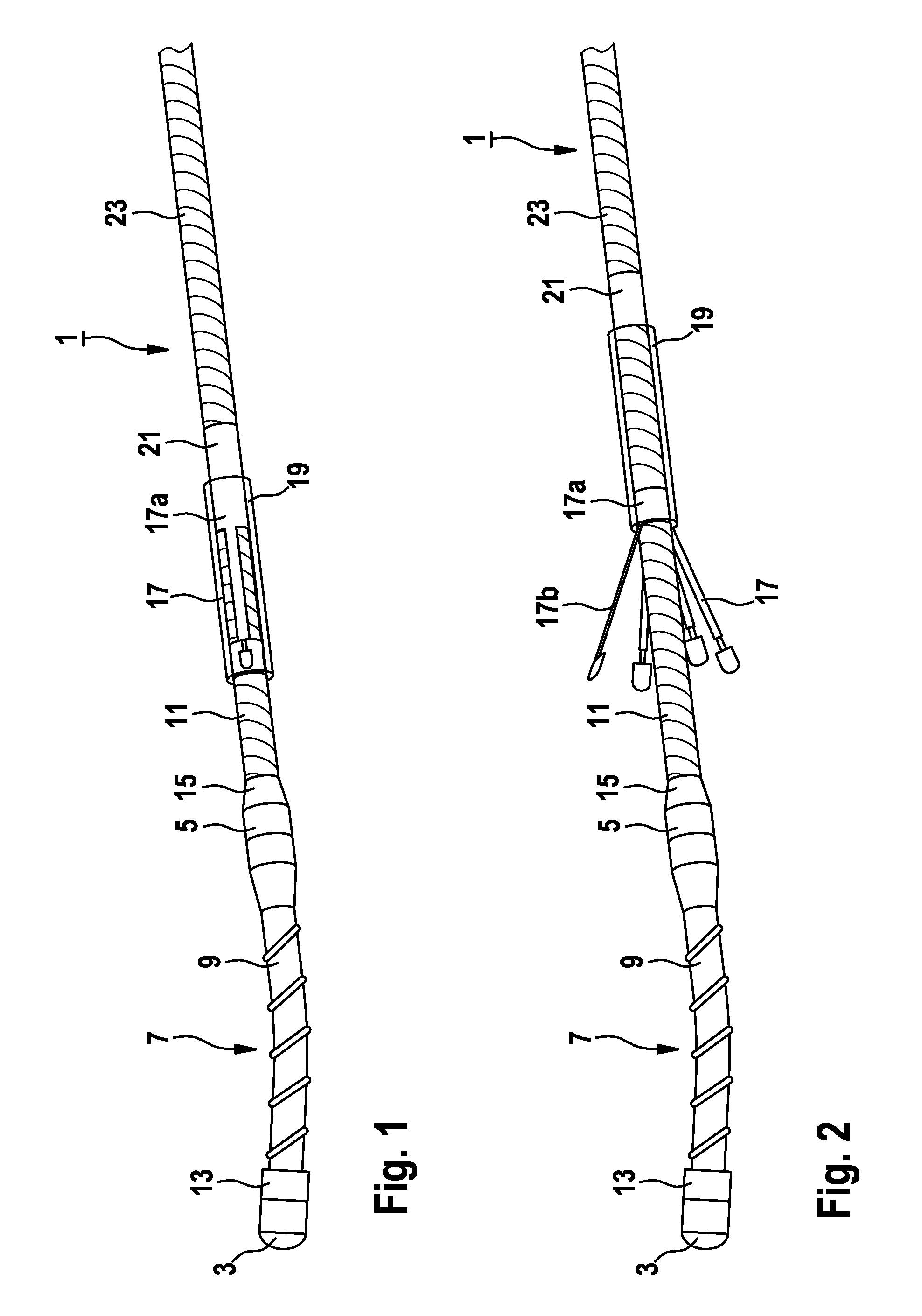Implantable catheter lead or electrode lead
a technology of electrode lead and catheter lead, which is applied in the field of implantable catheter lead or electrode lead, can solve the problems of general non-explantability, reduce and less stringent demands on the operator's skill, and reduce the trauma to the body cavity or vascular wall
- Summary
- Abstract
- Description
- Claims
- Application Information
AI Technical Summary
Benefits of technology
Problems solved by technology
Method used
Image
Examples
Embodiment Construction
[0027]FIGS. 1 and 2 illustrate the distal section of a pacemaker electrode lead 1 having a tip electrode 3 disposed at the distal end, and a ring electrode 5 spaced a certain distance therefrom on a flexible plastic lead body 7 that can be composed, for example, of silicon tube with a Parylene coating which can enhance the sliding properties. Coiled electrode leads 9 and 11 run within lead body 7, and x-ray markers 13 and 15 are provided at the sites of tip electrode 3 and the ring electrode 5. In a preferred version, electrodes 3 and 5 can themselves be designed as x-ray markers.
[0028]A spreading element 17 composed of Nitinol is clamped onto lead body 7, which body in the inactive state shown in FIG. 1 is held by a tubular sleeve 19 that has a platinum stop ring 21 and is slipped from the proximal end of electrode lead 1 over this lead. These are mounted on the front (distal) end of a polyurethane (PU) tube 23 that has a slip-type coating. In this state, the pacemaker electrode le...
PUM
 Login to View More
Login to View More Abstract
Description
Claims
Application Information
 Login to View More
Login to View More - R&D
- Intellectual Property
- Life Sciences
- Materials
- Tech Scout
- Unparalleled Data Quality
- Higher Quality Content
- 60% Fewer Hallucinations
Browse by: Latest US Patents, China's latest patents, Technical Efficacy Thesaurus, Application Domain, Technology Topic, Popular Technical Reports.
© 2025 PatSnap. All rights reserved.Legal|Privacy policy|Modern Slavery Act Transparency Statement|Sitemap|About US| Contact US: help@patsnap.com



